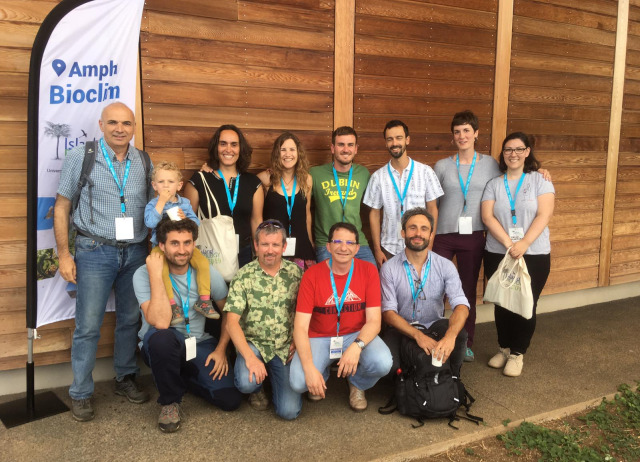IPNA-CSIC researchers take part in the international congress "Island Biology 2019"
IPNA-CSIC researchers take part in the international congress "Island Biology 2019"
Reunion (Indian Ocean) from 8 to 13 July. This meeting welcomed nearly 400 experts from 45 countries, specialised in marine and terrestrial biodiversity, climate change, interactions between species, epidemiology or invasive species, among other disciplines, and aimed at analysing biodiversity research and the conservation strategies carried out on islands of different proportions. Researchers Brent Emerson, Carmelo Andújar, Manuel Nogales, Marta López Darias, Aarón González Castro, Paula Arribas and Julien Piquet participated with eight presentations in different regular and plenary sessions. In addition, Brent Emerson, Marta López Darias and Aarón González Castro chaired various sessions of the conference.
During the conference held at the Université de la Réunion, researchers from the institute also presented three posters. Below is a list of the titles of the presentations and posters
Presentations:
- Whole-community assembly from metabarcoding data reveals the structure of the soil mesofauna at multiple genetic levels and spatial scales. (C. Andújar, P. Arribas, A. Vogler and B. Emerson)
- What do wind-dispersed species tell us about loss of dispersal potential on islands? (M. Mairal, P. Arribas, A. Vogler and B. Emerson)
- Past, present and future of invasive alien species on the Macaronesian islands (M. López Darias, P. A. V. Borges, C. Medeiros, P. Oliveira, J. C. Piquet and J. L. Rodríguez Luengo)
- A global review of frugivory and seed dispersal on islands (M. Nogales, K. Mcconkey, T. Carlo, D. Wotton Debra, P. Bellingham, A. Traveset, A. González Castro, R. Heleno, K. Watanabe, H. Ando and D. Drake)
- Threatened plant seeks pollinator (or when conservation practices prevent mutualistic interactions) (A. González Castro and F. Siverio)
- The role of morphological traits in mutualistic interactions among plants and vertebrates in the Galápagos (S. Hervias Parejo, R. Heleno, M. Nogales, J. Olesen, P. Vargas and A. Traveset)
- Twenty years of the invasion of the California kingsnake (Lampropeltis californiae) in Gran Canaria island (J. C. Piquet, R. Gallo Barneto, M. A. Cabrera Pérez, M. A. Peña Estévez, C. Monzón Argüello, C. Patiño Martínez, L. F. López Jurado, M. Nogales and M. López Darias)
- Dispersal, niche and topoclimatic variation: speciation consequences for island invertebrates (B. Emerson, A. Salces Castellano, V. García Olivares and J. Patiño)
Posters:
- The relative role of frugivore pigeons as seed dispersers on oceanic islands: a key ecosystem function (J. Romero and M. Nogales)
- Intra-island assembly of soil biodiversity: habitat filtering and microendemicity across space and habitats (C. Andújar, P. Arribas, H. López and B. Emerson)
- Towards a methodological unification and theoretical synthesis in Island Biodiversity Genomics: the iBioGen consortium (V. Noguerales, E. Meramveliotakis, P. Arribas, C. Andújar, A. C. Dimitriou, T. J. Creedy, S. Sfenthourakis, H. Morlon, A. Vogler, B. Emerson and A. Papadopoulou)
